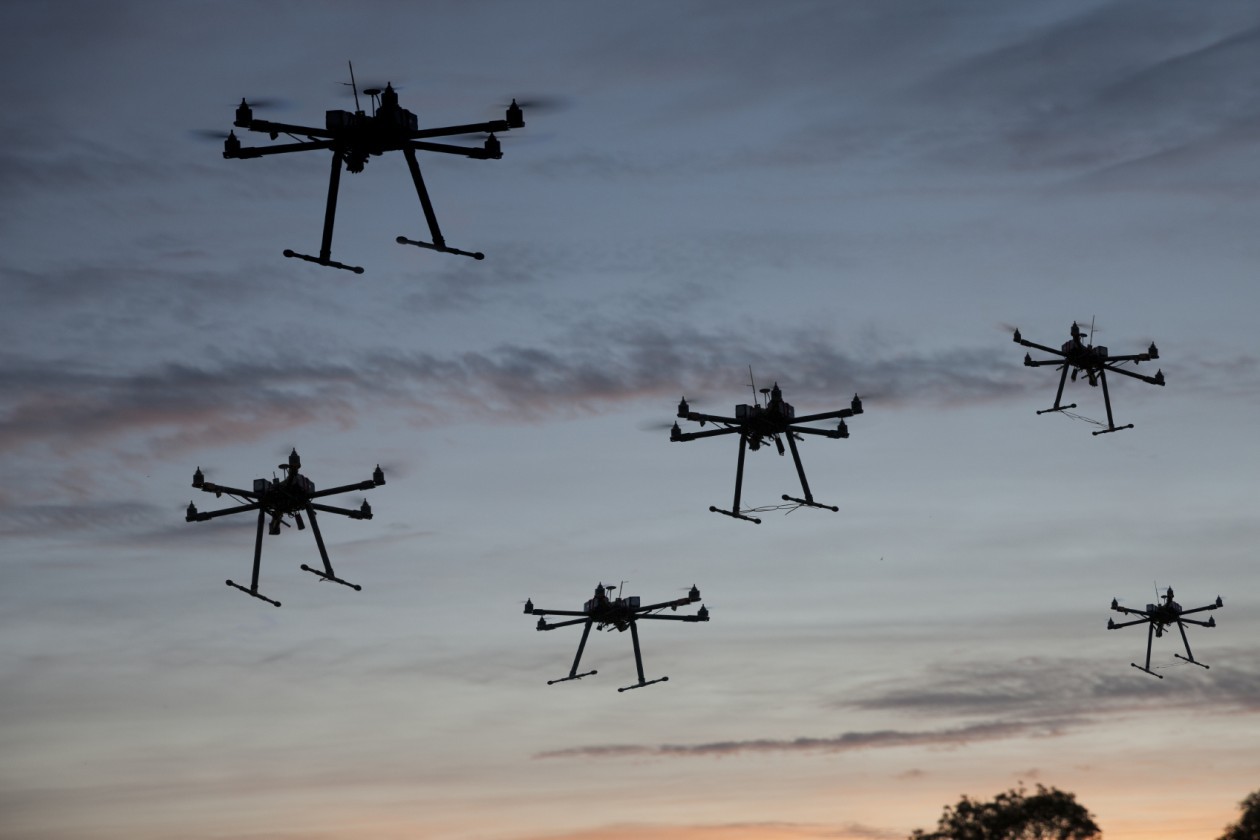Autonomous infrastructure
This research area is focusing on the design, testing and implementation of autonomous systems in all domains (land, air and sea) for scientific and other uses. It covers both research collaboration to use autonomous systems for Arctic research and establishment, continued development and use of testbeds and other support structures.

The use of individual highly automated or autonomous systems can have many advantages, but in order to fully exploit the potential of such systems, they should be integrated into an infrastructure that itself should be integrated with our existing, physical and digital infrastructure including the Internet of Things.
Within such an autonomous infrastructure, individual systems in all domains (land, air and sea) can collaborate without the need for a human operator either in or on the decision loop of the infrastructure. This trends towards “full” or “true” autonomy even though this is not yet a well-defined concept.
Safe, secure and efficient
The infrastructure can be given tasks to perform, but will also be able to identify tasks by itself. When a task is given or identified, the infrastructure will organize itself, by deconflicting and coordinating internally to find the optimum configuration. Should new systems join or leave the infrastructure, it will reorganize accordingly. This self-organizing ability will increase the effectiveness of the infrastructure, but can also considerably reduce the risk of accidents or failure.
The overall vision for an autonomous infrastructure is therefore to let individual systems work together in a safe and secure, but also more efficient way. This vision obviously comes with a number of challenges including efficient Unmanned Traffic Management (UTM), sharing of sensor data, secure system-to-system communications, counter measures to protect the infrastructure etc. Besides the technological and computational challenges, there are also substantial regulatory and Man-Machine-Interface related issues to be tackled.
Ongoing projects include
TAPAS, ASTA and other testbeds
In order to conduct tests of individual automated or autonomous systems a number of Danish testbeds have been established and are under continuous development. One testbed is the Autonomous Systems Test Arena (ASTA) that is established at the main DTU campus. ASTA is a 1000 square meter air-dome allowing individual and combined testing of autonomous systems in all domains (land, air and sea) in a controlled environment. ASTA is established within the framework of the Center for Collaborating Autonomous Systems (CCAS) at DTU.
For the testing in a realistic environment, DTU Space continues the development of the infrastructure called TAPAS (Testbed in Aarhus for Precision Navigation and Autonomous Systems). TAPAS was established in 2018 has an RTK-network in the City of Aarhus. There is an ongoing effort to expand TAPAS with an Unmanned Traffic Management system and high-speed communication. TAPAS is owned by the Danish Agency for Data Supply and Efficiency and is operated and developed by DTU Space in collaboration with the City of Aarhus.
The combination of ASTA and TAPAS together with other testbeds (e.g. the UAS Denmark Test Center in Odense) will allow an efficient staged approach to testing and eventually certification of unmanned, autonomous systems and autonomous infrastructure.
KARI-KOPRI collaboration
DTU Space has established a research collaboration with two organizations in the Republic of Korea: The Korea Aerospace Research Institute (KARI) and the Korea Polar Research Institute (KOPRI). The purpose of the collaboration is to test the use of unmanned systems to conduct research in the Arctic.
The project aims at providing proof-of-concept for the use of smaller and larger unmanned research platforms in the challenging Arctic environment – both commercial systems and systems developed by KARI. It is the intention to conduct flights over glaciers in Greenland thus gathering data for mapping the detailed structure of the glaciers.